Omar M. Yaghi, a chemist born to Palestinian refugee parents in Jordan, has been awarded a joint Nobel Prize for his work on “metal organic frameworks.”
Jordanian-born Palestinian chemist awarded Nobel Prize


Omar M. Yaghi, a chemist born to Palestinian refugee parents in Jordan, has been awarded a joint Nobel Prize for his work on “metal organic frameworks.”
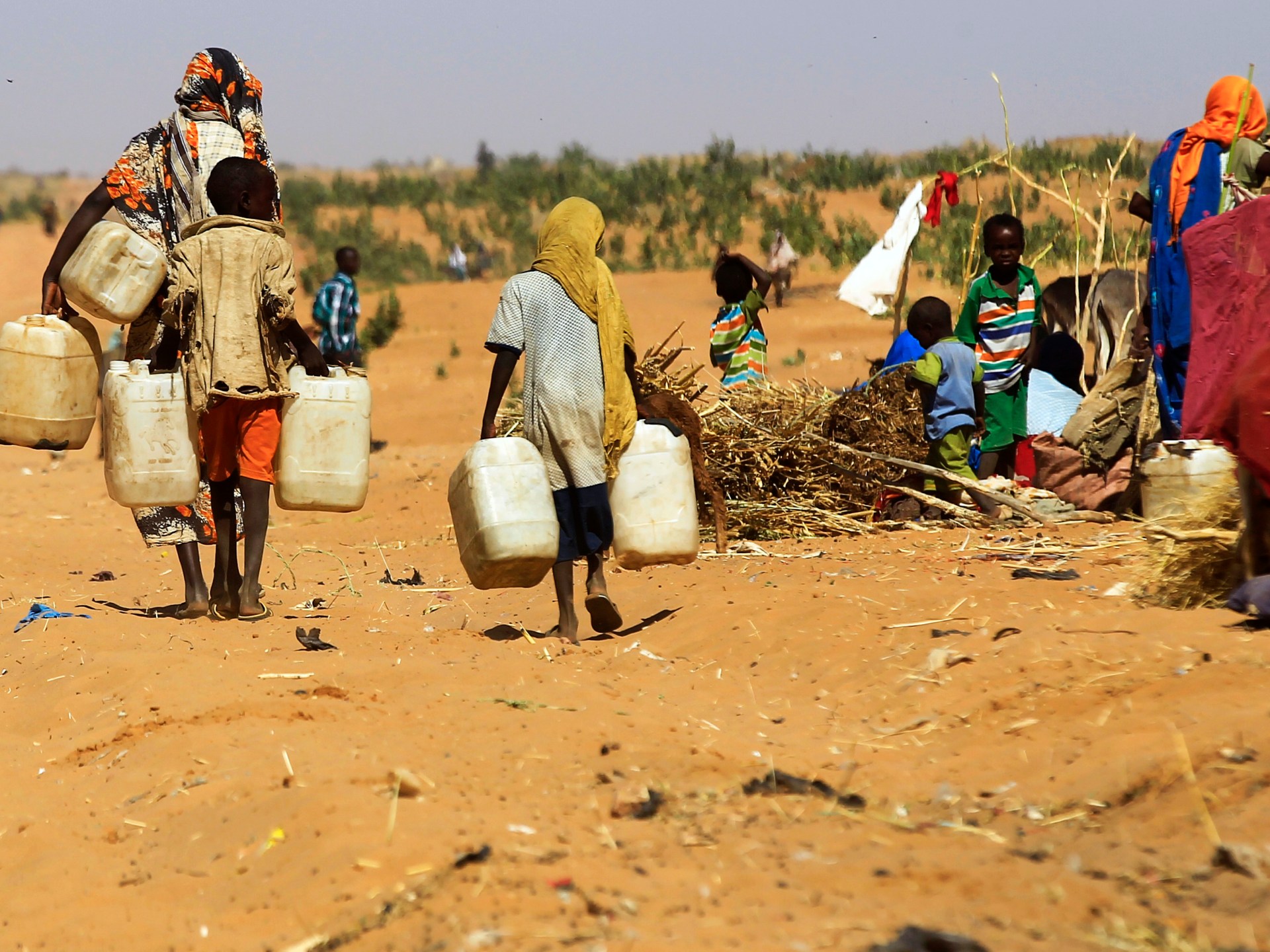
At least 12 people have been killed and 17 were wounded when the paramilitary Rapid Support Forces (RSF) shelled a hospital in Sudan’s North Darfur state, medical sources said.
A female doctor and a nursing staff member were among the injured in the attack on the el-Fasher Hospital, the Sudan Doctors Network said in a statement on Wednesday.
list of 3 itemsend of list
The medical group said the RSF “directly bombed” the facility. It alleged the attack was a “full-fledged war crime” and showed “a complete disregard for the lives of civilians and international laws that protect health facilities and their workers”.
The group held the RSF “fully responsible” for the attack and appealed to the international community and the United Nations Security Council to take immediate action to stop attacks on health facilities and civilian homes and to protect the devastated health system in the besieged city.
The hospital is one of the last functioning health facilities in the city, with most repeatedly bombed and forced to shut.
Two medical sources confirmed Wednesday’s attack, which was the second on the hospital within 24 hours, after eight people were killed in an attack on a maternity ward on Tuesday.
The RSF is pressing a fierce assault on el-Fasher in an attempt to wrest control of the city away from its rivals, the regular Sudanese army.
Since April 2023, the war between the two forces has killed tens of thousands, displaced some 15 million and pushed nearly 25 million people into acute hunger, according to UN figures, triggering what has widely been described as the world’s largest humanitarian crisis.
Some activists say el-Fasher, the last state capital in the vast western Darfur region to elude the paramilitary’s grasp, has become “an open-air morgue” for starved civilians.
The RSF has imposed a blockade on el-Fasher since May 10, 2024, despite international warnings about the dangers to the city, a hub for humanitarian operations in the five Darfur states.
Nearly 80 percent of households in need of medical care in el-Fasher are unable to access it, according to the UN.
Exhausted medical teams are already scrambling to treat the injured amid daily attacks on the city.
Nearly 18 months into the RSF’s siege, the city – home to 400,000 trapped civilians – has run out of nearly everything. The animal feed families have survived on for months has grown scarce and now costs hundreds of dollars a sack.
The majority of the city’s soup kitchens have also been forced shut for lack of food, according to local resistance committees, volunteer groups that coordinate aid.
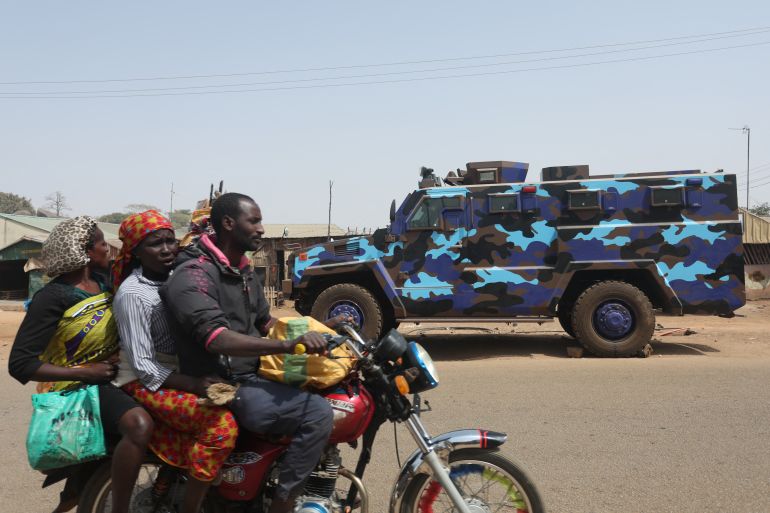
United States Senator Ted Cruz has accused Nigeria’s government of enabling a “massacre” against Christians, citing a rising number of attacks against the community in the country’s troubled centre.
In an X post on Tuesday, Cruz said 50,000 Christians have been killed since 2009 with 2,000 schools and 18,000 churches destroyed by what he called “Islamist” armed groups, but he did not cite sources for the information.
list of 4 itemsend of list
Cruz, who counts evangelical Christians among his base, has introduced a bill to sanction Nigerian officials whom he accused of “ignoring and even facilitating the mass murder of Christians”.
The Republican lawmaker is the most prominent figure among voices from within the Christian political right in the US who are increasingly pushing claims of a Christian genocide in Africa’s most populous country, where 48 percent of people are Christians.
Nigeria’s government, while admitting a security problem, has denied the claims. Responding to Cruz’s claims, the Christian Association of Nigeria said the killings in the country were not targeting Christians alone and foreign groups were looking to exploit domestic crises.
Nigeria is plagued by security problems as the armed group, Boko Haram, wages a deadly rebellion in the northeast and criminal gangs operate in the northwest. The country has also been racked by deadly communal violence.
More than 10,000 people have been killed and hundreds kidnapped since Bola Tinubu was elected president in May 2023. As many as 3 million people remain displaced by the violence.
So what’s the truth? And why has Nigeria failed to improve its security?
Cruz blames Nigerian officials for what he calls “Christian massacres”.
“It is the result of decisions made by specific people, in specific places, at specific times – and it says a great deal about who is lashing out now that a light is being shone on these issues,” Cruz said in his X post.
“The United States knows who those people are, and I intend to hold them accountable,” he added without mentioning names.
In September, Cruz introduced what he called the Nigeria Religious Freedom Accountability Act of 2025, which, he said, aims to hold officials who “facilitate Islamic Jihadist violence and the imposition of blasphemy laws” accountable. The bill seeks to target officials who “facilitate violence against Christians” and those who enforce Islamic and blasphemy laws. It also seeks to designate Nigeria as a “country of particular concern” and Boko Haram as well as its splinter faction, the ISIL (ISIS) affiliate in West Africa Province (ISWAP), as “entities of particular concern”.
The US designated Boko Haram as a “foreign terrorist organisation” in 2013.
Similarly, Republican Congressman Riley Moore wrote to Secretary of State Marco Rubio on Monday, urging him to designate Nigeria as a country of particular concern “due to the alarming and ongoing persecution of Christians across the country”. He said in his letter that 7,000 Christians have been killed in Nigeria this year by groups such as Boko Haram. He also did not cite his sources but said: “Nigeria has become the deadliest place in the world to be a Christian.”
Last week, Bill Maher, the host of the HBO current affairs and political satire show Real Time With Bill Maher, also made claims of a Christian genocide by Boko Haram, which he said was being ignored because “Jews aren’t involved” – a reference to the worldwide outrage over Israel’s genocide in Gaza.
“I’m not a Christian, but they are systematically killing the Christians in Nigeria,” he said. “They’ve killed over 100,000 since 2009. They’ve burned 18,000 churches. … They [Boko Haram] are literally attempting to wipe out the Christian population of an entire country.”
It is unclear where Maher got his figures from.
The statements appeared to mirror President Donald Trump’s misleading take on an alleged “genocide” of white people in South Africa.

There are increasing attacks on predominantly Christian farming communities in Nigeria’s Middle Belt and central states. Nighttime raids, burned villages, kidnappings and mass displacements are rife with communities accusing the government of mounting a weak response and failing to arrest perpetrators.
The attackers are often identified by victims as being herders from the rival Fulani pastoral ethnic group, which is predominantly Muslim.
In the region, which is Nigeria’s most fertile, herder and farming communities have a long history of tension and clashes. Analysts link the violence to dwindling access to resources like farm- and rangeland as well as water because of climate change and population growth.
The Nigerian government calls these attacks a “local farmer-herdsmen crisis” and has launched grassroots efforts to create dialogue between the two sides.
However, farming communities, which are non-Fulani and are disproportionately affected, place more weight on the ethnic undertones and are outraged at the government’s unwillingness to highlight those.
As the attacks have grown in scale and the weaponry used has increased, farming communities made up of diverse ethnic groups are calling the attacks “ethnic cleansing”. Analysts said that while the conflict may have started out as resource disputes, it is heavily connected to ethnicity and religion as well. Reports of attacks and reprisals on both sides go back as far as 2013, but recent violence has been focused on farmers.
In an incident in June, herdsmen attacked the Tiv community of Yelwata in Benue State, killing more than 100 people. Tinubu and other officials visited the state and in their statements applied the “farmer-herdsmen” framing. But the Tiv leader, James Ortese Iorzua Ayatse, was quick to counter them.
“What we are dealing with here in Benue is a calculated, well-planned, full-scale genocidal invasion and land-grabbing campaign by herder terrorists and bandits,” he said.
In May, Amnesty International reported that nearly 10,000 people have been killed since 2023, including children, in the worst affected states of Benue and Plateau, where gunmen kill people and then destroy infrastructure like schools, clinics, grain reserves, places of worship and boreholes. More than 500,000 people have been displaced.
Kaduna and Nasarawa states have also been heavily impacted. The authorities, Amnesty International said, have failed to make arrests or prosecute people, prompting anger and mistrust.

Cruz and others on the US right may have muddled those attacks with separate conflicts in Nigeria’s northeastern states, including Borno, Adamawa and Yobe.
These are perpetuated by ideological groups – Boko Haram and ISWAP. Both Christians and Muslims, churches and mosques, have been attacked in these states with Muslims most affected because these are Muslim-majority states.
The ideological armed groups are seeking to create a state based on their interpretation of Islamic law.
Borno, where Boko Haram emerged in the early 2000s, is the most affected. At its height in 2015, Boko Haram controlled swaths of territory across Nigeria and neighbouring Chad, Niger and Cameroon. It has weakened significantly in recent years. About 350,000 people had been killed by 2021 in the Boko Haram conflict, according to the United Nations Development Programme.
Separately, bandit groups are operating in the northwestern states of Katsina, Zamfara, Sokoto, Kebbi, Niger and Nasarawa, mostly for profit. They often conduct kidnappings for ransom and raids on communities. Although they frequently recruit from the Fulani community, they are not exclusively made up of members of this group.
However, analysts have noted that bandits are increasingly cooperating with ideological armed groups seeking to expand their territory. That has made the different crises more fluid with overlaps. Analysts said Nigeria’s security apparatus is overwhelmed and struggles to gather adequate intelligence to understand the extent to which these groups collaborate so it can respond efficiently to them.
Fulani nomadic communities – which can be found in Nigeria, Ghana and across Sahelian countries like Mali – have long faced systemic political and social exclusion although governments often argue that their pastoral nature makes it difficult to provide resources like schools, clinics and other services.
Many of them, analysts said, have nursed grievances for a long time. With the rise of powerful armed ideological groups looking to exploit their anger, analysts said more members of the community are being recruited for criminal purposes and ideological attacks.
Fulani herders have similarly been linked to armed groups operating in Mali and Burkina Faso like Jama’a Nusrat ul-Islam wa al-Muslimin (JNIM).
Legitimate Fulani herder associations, however, insisted that not all Fulani herders are engaged in crime or armed conflict and decry stereotypes of the group.

Last week, Nigeria’s information minister responded to Maher’s comments in a statement, saying they were overly simplistic.
“Portraying Nigeria’s security challenges as a targeted campaign against a single religious group is a gross misrepresentation of reality,” Mohammed Idris Malagi said.
“While Nigeria, like many countries, has faced security challenges, including acts of terrorism perpetrated by criminals, couching the situation as a deliberate, systematic attack on Christians is inaccurate and harmful. It oversimplifies a complex, multifaceted security environment and plays into the hands of terrorists and criminals who seek to divide Nigerians along religious or ethnic lines,” he said.
In an opinion piece for Al Jazeera, Gimba Kakanda, a special assistant to the vice president, wrote that the crisis is more about ethnic rivalries than it is about religion.
“In reality, Nigeria’s conflicts are multifaceted, driven by ethnic rivalries, land disputes and criminality, with religion often secondary,” Kakanda wrote. “While Western media often highlight attacks on churches and Christian communities, the reality is that these terrorists are indiscriminate in their violence.”
The focus on Nigeria, Kakanda said, was linked to Vice President Kashim Shettima’s stated support for Palestinians at the recent UN General Assembly.
Abimbola Ayuba, a spokesperson for the Christian Association of Nigeria, told Nigeria’s The Guardian newspaper that the country’s myriad crises were being exploited by foreign groups.
“Sometimes, our situation is being taken advantage of by groups who know that they benefit from foreign interests,” he was quoted as saying.
“Those foreign interests have a right to poke their noses into what’s going on in our system, but we also have a right to report things as they are,” he added.
Cruz, in his new bill, again lumped together the separate issue of blasphemy and Islamic law with the Middle Belt attacks.
Twelve Muslim-majority Nigerian states in the country’s north apply Islamic law, as is allowed by the 1999 Nigerian Constitution. They are Zamfara, Bauchi, Borno, Gombe, Jigawa, Kaduna, Kano, Katsina, Kebbi, Niger, Sokoto and Yobe.
Islamic law in these states is meant to be applied only to Muslims although the US noted in a 2019 report that state governments did not always adhere to that clause.
Blasphemy, which pertains to insults against Islam or notable Islamic figures, carries serious punishments under Islamic law. Some scholars interpret it as requiring the death sentence although this is highly disputed.
In 2022, Kano State sentenced atheist Mubarak Bala to 24 years in prison for what prosecutors claimed was a blasphemous Facebook post. The case generated nationwide outrage and calls for his release. Bala was freed in 2020.
There have been intermittent cases of illegal, deadly mob action against people who are perceived to have blasphemed in the Muslim-majority north.
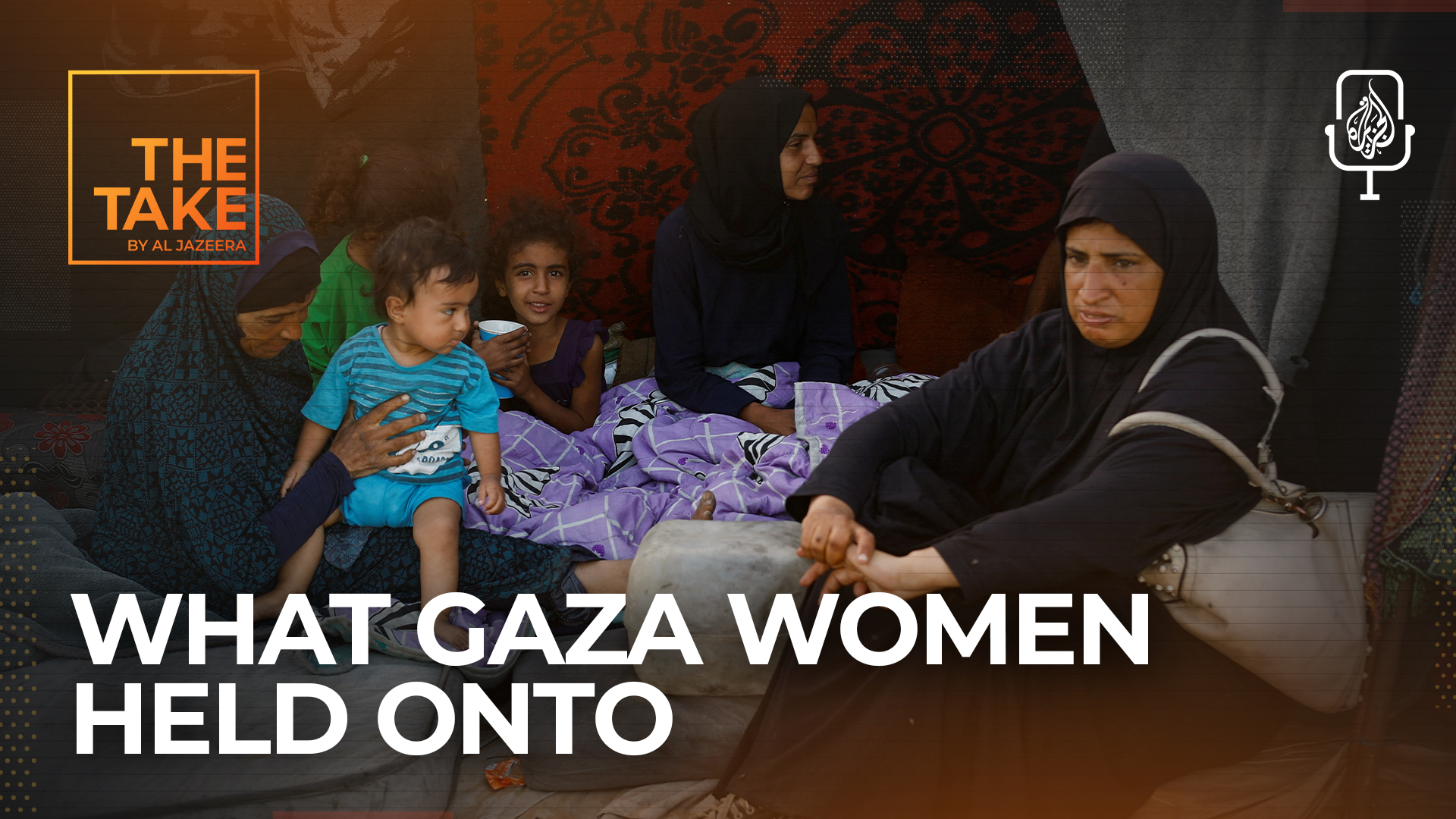
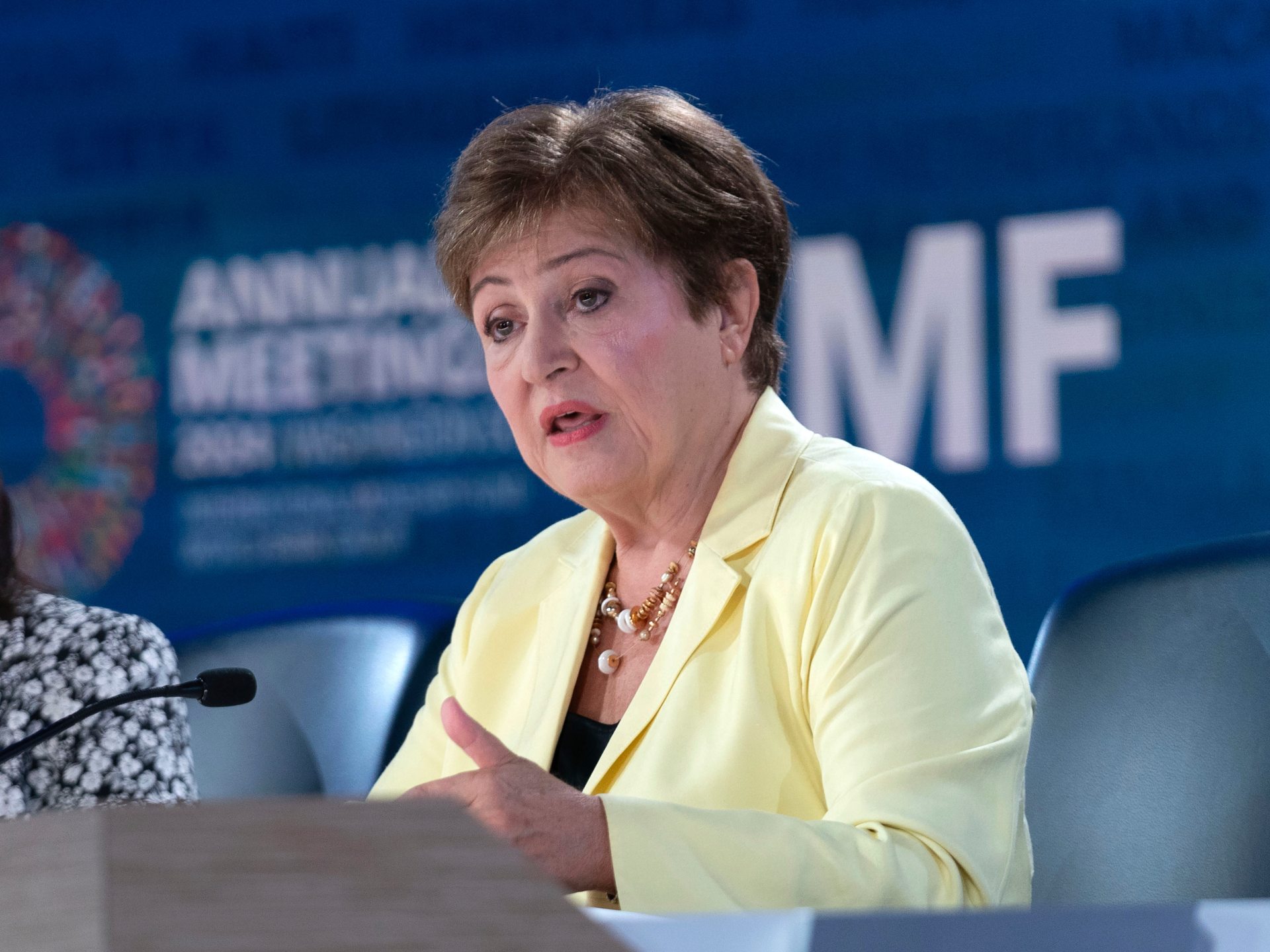
The global economy is holding up better than expected despite major shocks such as United States President Donald Trump’s tariffs, but that resilience may not last, the head of the International Monetary Fund (IMF) says.
“Buckle up,” Managing Director Kristalina Georgieva said in a speech at the Milken Institute think tank on Wednesday. “Uncertainty is the new normal, and it is here to stay.”
list of 4 itemsend of list
Her comments come on a day when gold prices hit $4,000 an ounce for the first time as investors seek safe havens from a weaker dollar and geopolitical uncertainty. She spoke before the IMF and World Bank hold their annual meetings next week in Washington, DC. Trump’s trade penalties are expected to be in sharp focus when global finance leaders and central bankers gather.
The global economy is forecast to grow by 3 percent this year, and Georgieva is citing a number of factors for why it may not slip below that: Countries have put in place decisive economic policies, the private sector has adapted and the tariffs have proved less severe than originally feared.
“But before anyone heaves a big sigh of relief, please hear this: Global resilience has not yet been fully tested. And there are worrying signs the test may come. Just look at the surging global demand for gold,” she said.
On Trump’s tariffs, she said: “The full effect is still to unfold. In the US, margin compression could give way to more price pass-through, raising inflation with implications for monetary policy and growth.”
The Republican US administration imposed import taxes on nearly all US trading partners in April, including Canada, Mexico, Brazil, China and even the tiny African nation of Lesotho. “We’re the king of being screwed by tariffs,” Trump said on Tuesday in the Oval Office during a meeting with Canadian Prime Minister Mark Carney.
While the US has announced some trade frameworks with nations such as the United Kingdom and Vietnam, the tariffs have created uncertainty worldwide.
“Elsewhere, a flood of goods previously destined for the US market could trigger a second round of tariff hikes,” Georgieva said.
The US Supreme Court next month will hear arguments about whether Trump has the authority to impose some of his tariffs under the International Emergency Economic Powers Act.
In her wide-ranging remarks, Georgieva pointed to youth discontent around the world as many young people foresee a future in which they earn less than their parents.
“The young are taking their disappointment to the streets from Lima to Rabat, from Paris to Nairobi, from Kathmandu to Jakarta. All are demanding better opportunities,” she said. “And here in the US, the chances of growing up to earn more than your parents keeps falling, and here too, discontent has been evident – and it has helped precipitate the policy revolution that is now unfolding, reshaping trade, immigration and many international frameworks.”
She also called for greater internal trade in Asia, more business-friendly changes in Africa and more competitiveness in Europe.
For the US, Georgieva urged the government to address the federal debt and encourage household saving.
The national debt is the total amount of money that the federal government owes to its creditors. The US federal debt has increased from $380bn in 1925 to $37.64 trillion in 2025, according to US Department of the Treasury data.
The Congressional Budget Office reported in July that Trump’s new tax and spending law will add $3.4 trillion to that total through 2034.
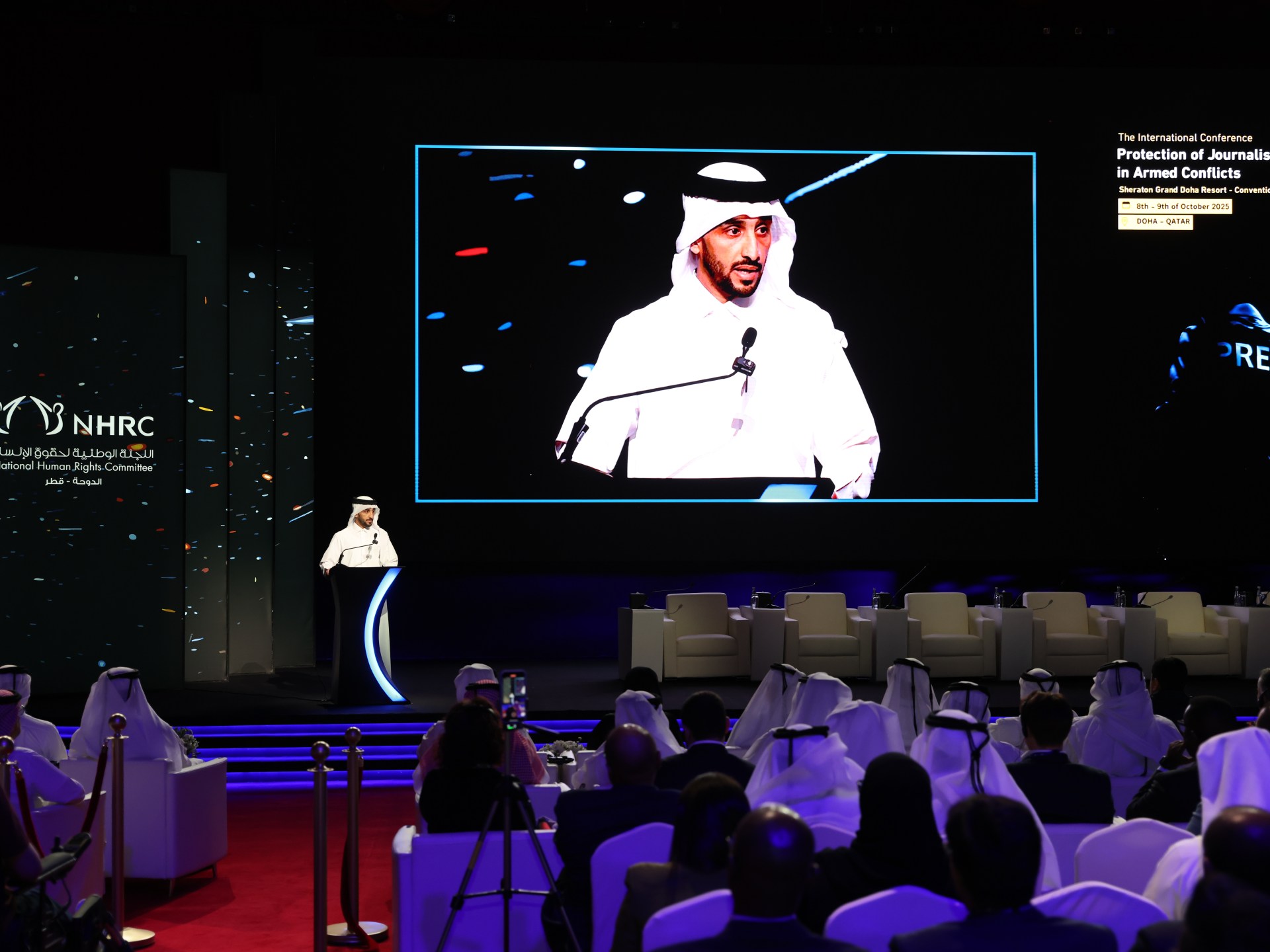
The Director General of Al Jazeera Media Network has stressed the importance of protecting journalists working in conflict zones and called for more solidarity between media organisations and human rights groups.
In his first public address since he was appointed director general of the Doha-based network last month, Sheikh Nasser bin Faisal Al Thani said on Wednesday that Al Jazeera has made the protection of journalists a firm priority and the network conducts training and mentorship of its journalists to ensure this.
list of 4 itemsend of list
“The press has never been a party to the conflict, but has been a tool for getting information to the people,” Sheikh Nasser told the Conference on The Protection of Journalists in Armed Conflicts, a two-day event held in Doha, Qatar.
He said it is critical to ramp up measures to safeguard journalists in war zones. “Otherwise, war crimes will remain unwritten” about.
He called for the implementation of human rights regulations and enhanced solidarity among media organisations and human rights organisations.
“Silencing free speech will not stop the truth,” Sheikh Nasser said. “Protecting journalists is protection of the truth itself.”
The first day of the conference comprised several sessions, where speakers included journalists who had reported in conflict zones, such as Al Jazeera’s Gaza bureau chief Wael Dahdouh, who was wounded in an Israeli attack on Gaza in late 2023.
Dahdouh has campaigned to raise awareness of the unsafe conditions for journalists working in Gaza since Israel launched its war on the Palestinian territory on October 7, 2023.
At least 300 journalists and media workers have been killed in Gaza during the two-year war, according to the Shireen Abu Akleh Observatory. This includes 10 journalists from Al Jazeera.
“Journalists are being killed and genocide is being committed against them,” Dahdouh told the conference.
Other speakers included legal experts and workers associated with nonprofit organisations that work for the safety of journalists, such as Reporters Without Borders (RSF) and the Committee to Protect Journalists (CPJ). A spokesperson for the International Criminal Court (ICC) also spoke at one of the sessions.
The discussions focused on attacks against journalists and the imprisonment of journalists in Gaza and around the world.
Several speakers throughout the day highlighted the importance of treating journalists like civilians. Speakers added, however, that international law provisions that lay down safeguards for civilians might not apply similarly to journalists. They pressed on the need for international laws that specifically focus on safeguarding journalists and media organisations.
“The civilian can go away from the combat field but the journalist has to stay. To assimilate the war journalist with the civilian is not right,” Omar Mekky, the regional legal coordinator for the Near and Middle East Region for the International Committee of the Red Cross (ICRC), said.
Speakers also asserted the importance of countries stepping in and putting pressure on the governments that are targeting journalists.